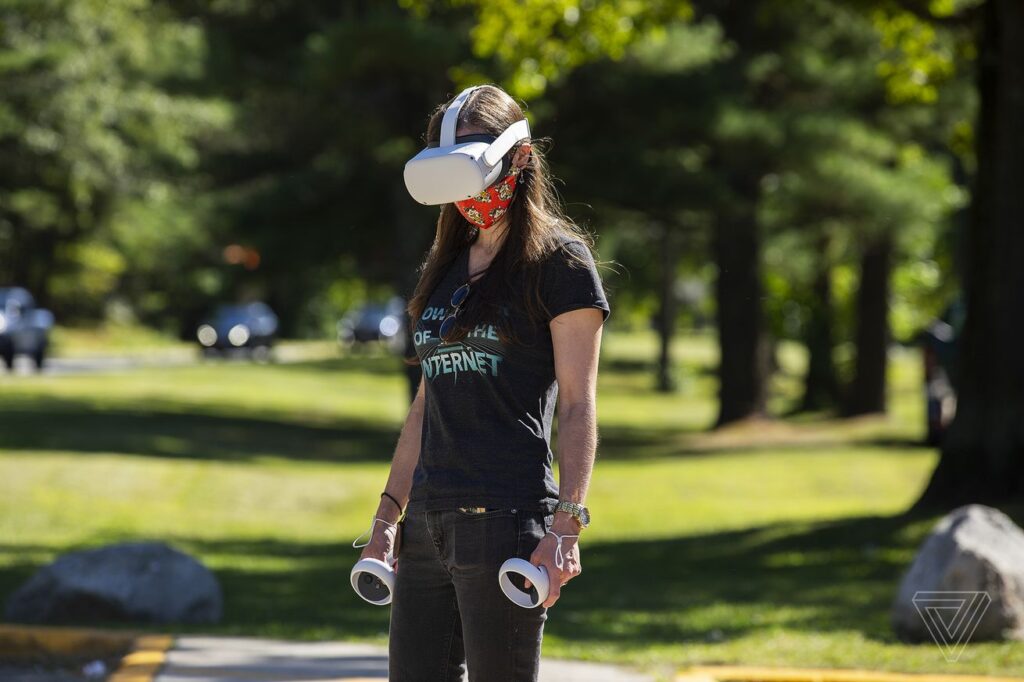Meta is rolling out the v44 software update for Quest headsets, and its big new feature is good news for anyone who likes sharing videos of themselves in virtual reality. There are new advanced camera settings that let you manually adjust how much stabilization is added and record 16:9 videos (or 9:16 vertical videos, which are perfect for TikTok) in addition to square ones — something that used to only be available through third-party software.
The settings are currently listed as experimental for reasons that are about to become obvious, but they do provide a decent amount of control; alongside the aspect ratio and stabilization controls are options that let you pick your frame rate and compression quality, though Meta’s blog post notes that those options could come with performance and file size hits, respectively.
Let’s look at a few examples of the new video settings in action. I recorded these clips at the default 24(ish) frames per second but bumped the bit rate as high as it would go.
I’m not just flexing, I promise pic.twitter.com/GZ9XDoxvER
— Mitchell (@strawberrywell) September 20, 2022
Looking at these results, it’s easy to see why they’re not immediately available by default. As the Quest’s UI warns, going from the default “low” stabilization to “high” stabilization will crop your image by quite a bit. That’s especially true if you’re using the 16:9 landscape aspect ratio, which cuts off a lot of the bottom portion of the screen compared to the original square. The good news is that you can mix and match these settings. If you want high stabilization and a 1:1 aspect ratio, you can totally do it.
While the increased stabilization isn’t perfect (when reviewing my footage, I noticed one or two moments where it seemed to focus on the wrong area of the frame instead of where I was looking), I might consider turning it on if I were planning on sharing my Beat Saber recordings with people who had easily upset stomachs; not being able to see my hands very well is a small price to pay to avoid queasiness. Personally (and perhaps unsurprisingly), medium feels like the sweet spot between smoothing out the footage and not cropping it too far.

Image: Meta
To turn on the advanced camera controls, go to Settings > Experimental and toggle them. After that, the controls will be in an “Experimental” section under Settings > System > Camera.
Update v44 also brings a few new features to parental controls and app lock, the system that lets you passcode protect certain apps. Parents and guardians will be able to prevent their teens from sideloading apps onto their Quests by blocking the ability to use developer mode, and you’ll be able to bulk add passcodes to apps, either via a manual selection or a filter. (For example, you can add a passcode to all mature-rated games.)
Meta says the update will be rolling out “over the next few weeks,” so you may have to wait just a bit longer for it.
PS: the advanced video settings have shown up for some people before this update (myself included), but now they’re officially part of the OS — as an experimental feature, of course.

